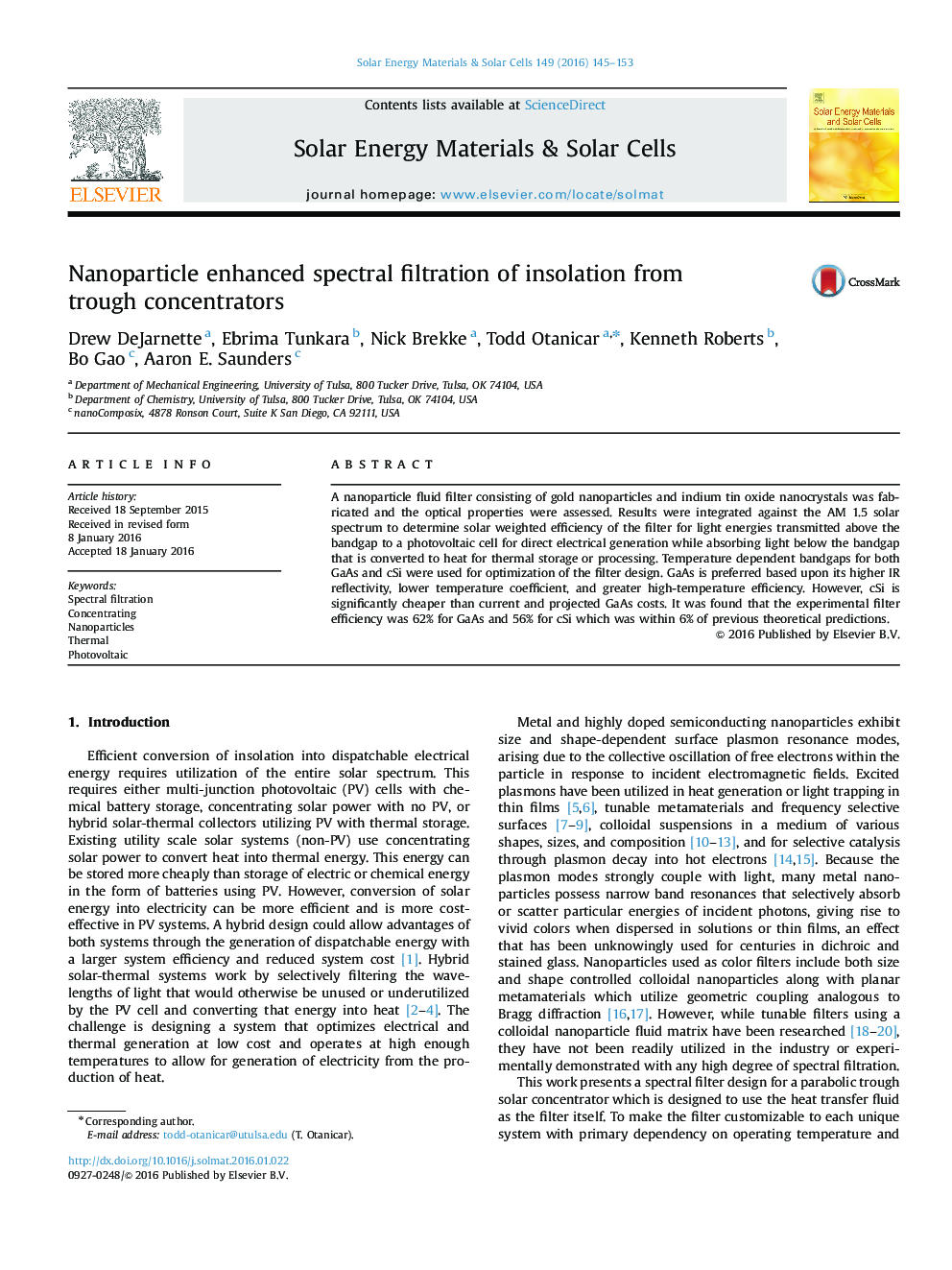| Article ID | Journal | Published Year | Pages | File Type |
|---|---|---|---|---|
| 6534764 | Solar Energy Materials and Solar Cells | 2016 | 9 Pages |
Abstract
A nanoparticle fluid filter consisting of gold nanoparticles and indium tin oxide nanocrystals was fabricated and the optical properties were assessed. Results were integrated against the AM 1.5 solar spectrum to determine solar weighted efficiency of the filter for light energies transmitted above the bandgap to a photovoltaic cell for direct electrical generation while absorbing light below the bandgap that is converted to heat for thermal storage or processing. Temperature dependent bandgaps for both GaAs and cSi were used for optimization of the filter design. GaAs is preferred based upon its higher IR reflectivity, lower temperature coefficient, and greater high-temperature efficiency. However, cSi is significantly cheaper than current and projected GaAs costs. It was found that the experimental filter efficiency was 62% for GaAs and 56% for cSi which was within 6% of previous theoretical predictions.
Related Topics
Physical Sciences and Engineering
Chemical Engineering
Catalysis
Authors
Drew DeJarnette, Ebrima Tunkara, Nick Brekke, Todd Otanicar, Kenneth Roberts, Bo Gao, Aaron E. Saunders,
